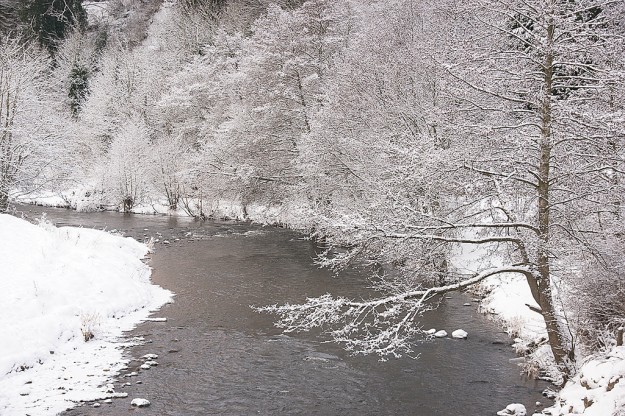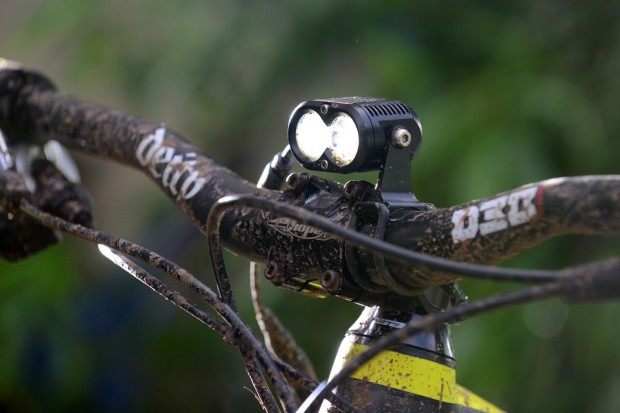
Choosing the best winter cycling clothing
It’s hard not to let your riding slip down the list of priorities as the winter lays claim to the land. With the rain, freezing temperatures and trails turned from golden, dust-covered beauties to ploughed up muddy affairs, it’s all too easy to leave the bike hidden away in the shed.
But what a shame to miss out on potentially the best part of the year, with quiet trails and crisp, clear days. And with just a few changes to your clothing setup, winter riding can be enjoyed, not endured. Experienced riders will understand the value of wise clothing choices, and I’ve drawn together, roughly in order of importance, the steps I take to beating off the cold.
Luckily, conditions don’t usually get that extreme in most of the UK, but still, you can never underestimate how seriously cold it can get. Getting cold is not pleasant so it’s crucial to be ready for the change in temperatures when you’re riding. The weather can easily change in the time you’re out – the day may start fine and clear but if it turns while you’re in the middle of nowhere, adequate clothing is a good step to preventing hypothermia. Something easily forgotten but which can make a huge difference, the wind-chill factor needs to be taken into account. It may be 5°C outside, but travel at 20mph and you’re looking at an apparent temperature in the region of -15°C. Yikes!
Jackets
Invest in a decent jacket. This is your first line of defence against the rain and wind, so it’s not an area to skimp. Prices for jackets can seem scary, but there are bargains to be had, particularly from less well-known brands. Importantly, spend what you need for your requirements. So if you’re never likely to go out in the rain, it may not be necessary to spend out on asuper-high-end full waterproof water repelling style of jacket, when a simple showerproof shell could suffice.
Decide your budget, what you want from a jacket, what features you deem necessary, and take a look at the BM Winter Jackets buyers guide before you shop.
Organisation is the key
It’s easy to find excuses not to go out in winter. Having the right kit gets rid of several of them, but here’s how to combat the rest:
Get ready the night before: Save time in the morning before a ride by getting your bike ready and have all your clothing laid out, so you just roll out of bed and be ready really quickly.
Emergency contact: Riding in the winter is more dangerous. Dark, wet and slippery trails don’t lend themselves to being at all safe, so ensure you let somebody know your proposed route. And take a mobile phone, and make sure it’s charge up!
Food and drink: Energy levels drop more quickly in cold weather, so fuel up before you leave and take food with you, or money so you can refuel at a shop. And even though it’s cold, still drink plenty of water, little and often.
Phone a friend: Or two. Riding with a couple of mates or your local MTB club gives you extra motivation to get out on a regular basis.
Enjoy yourself: Don’t forget that all the miles you put in through the winter will pay back next Spring. Think early season form.
Layering
Perhaps the most important defence against the cold is to layer. Yes, you could wear an old t-shirt and a big heavy cagoule, but it won’t be very effective or versatile. Instead, use several layers of clothing, commonly a baselayer, midlayer and jacket, and varying degrees of weight for each, to tailor your clothing setup for the conditions. This approach also allows you to alter your setup once out on the trails.
Base and midlayers come in many different styles, thicknesses and with different feature sets, but just a couple of each will start you on your way to having something for most conditions. And don’t forget, many of these layers can be used year round.
For more information about what to look for in baselayers.
Shorts/Trousers/Tights
Here, opinions are divided on the best approach to covering up the legs. A scoot around our local trail just the other day revealed a wide gamut of approaches, from bare legs and shorts to full longs. It’s a good idea to keep your hardworking knees covered up from the cold and wet, so to prevent injury, and here there’s several approaches.
Three quarter shorts or trousers (with some trousers converting to three quarters) are one option, and find favour with the style conscious riders. If you can manage it, lycra knee and leg warmers can be worn underneath baggy shorts, or without for the streamlined style, but here your particular taste will more likely decide the approach you opt for.
Product reviews for shorts.
Gloves
Summer gloves just can’t cut it when the mercury dips down, with their mesh panels and thin fabrics useless in insulating your digits from the cold. Better are proper full-length winter gloves, which are more heavily padded and multi-layered for warmth, though you’ll have to consider the compromise in control.
Head
With modern helmets being so well ventilated, a head-warmer can be a necessary addition to your attire, if you want to keep your ears from falling off. Skull caps provide good protection from the air that rushes through the zillions of vents in modern helmets, head bands cover just the ears in warmer conditions, and Buff-style garments allow a variety of options.
Shoes/socks/overshoes
Cold wet and numb toes are no fun and can really ruin your riding pleasure. This isn’t helped by wearing shoes with large areas of mesh, which though great in the heat of the summer, are plain daft in the winter.
Several manufacturers produce winter specific boots, which through much use of neoprene and other waterproof materials provide a dry sealed place of occupancy for your feet. An expensive option for occasional winter riders though.
Cheaper are waterproof socks which can provide enough damp proofing, or, like our roadie cousins, overshoes which are a cheap and effective solution – with the added bonus of keeping your expensive shoes clean, and saves the usual efforts to dry your shoes in time for the next ride. They’re easily damaged if you have to push your bike, though.
Glasses
Contact lens wearers will know the importance of wearing eyewear on the bike, and in winter it’s a particularly good idea – mud flicking into your eyes is, at best, highly distracting. Certain colours of lenses can also improve contrast in low light – go for orange or yellow tints.
Summary
We’re the first to admit that riding in the winter is tough. We’d much rather pack our bikes, bags and sunscreen and jet off to sunnier climes. Or go snowboarding for three months. But as that’s clearly not going to happen, sorting out your winter wardrobe can be the difference in looking forward to your next ride or hanging up the bike for the winter.
And it needn’t cost much, as a look through the member review pages reveals. Invest wisely, considering carefully your needs and ensuring each product fulfils your requirements. A couple of baselayers and midlayers, a quality waterproof and some trousers or tights are the basics you need, with winter gloves and a head-warmer also worthy purchases. Remember the importance of layering – there’s no right or wrong, but you’ll find the right combination after a couple of rides.
But remember, enjoy your riding, and think of next spring as inspiration to keep going…




